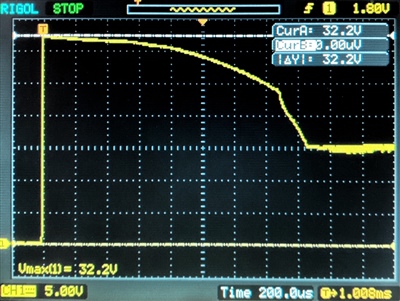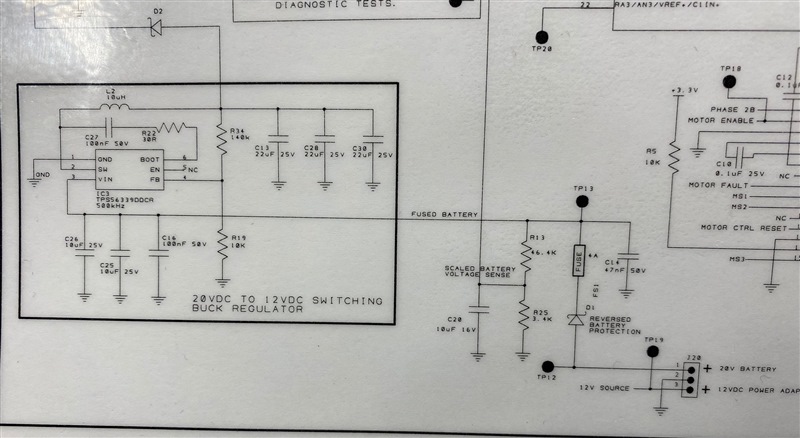We are using the published reference design with the part numbers called out in the BOM. Our circuit layout is modeled after your reference design board with the "EN" line floating. Our design is for 14 to 22 volts input with 12 volts output at 3 amps although the nominal load is only a few hundred mA. The circuit actually works well when first turned on. No heated parts, no noise, nice clean 12V output. The failure comes randomly after a few power-down and power-up cycles (typically within 5 to 10, but sometimes sooner). Once successfully turned on, it continues to run without a problem. The power cycles are done with a simple toggle switch in the 20V 3A power adapter input line. The failure occurs identically when powered from a bench supply with an inline toggle switch. After the part fails, a resistance check finds a short from Vin to ground. We have the input to the board fused, and the fuse blows so we don't see any burned parts during the failure. The load on the supply at first turn on is about 20mA. This increases to about 600mA once the circuit runs ~500mS and boots a micro-controller, and in operation may see an occasional 1.5A load. It only fails during either the power-down or power up cycle. We can't tell which because once it fails it current-limits the bench supply on the next turn-on when we have the fuse bypassed. We are using the recommended inductor from the BOM of the reference design which is a Bourns SDR1307-100ML 10uH 21mOhm. We have tried other inductors as well with different ratings (5.6uH and 22uH) and had the same failure where it works a few times, or for an extended time when left on, but fails with power cycle (slow normal physical toggle switch OFF for a few seconds and back ON).
Any insights or suggestions would be appreciated.





